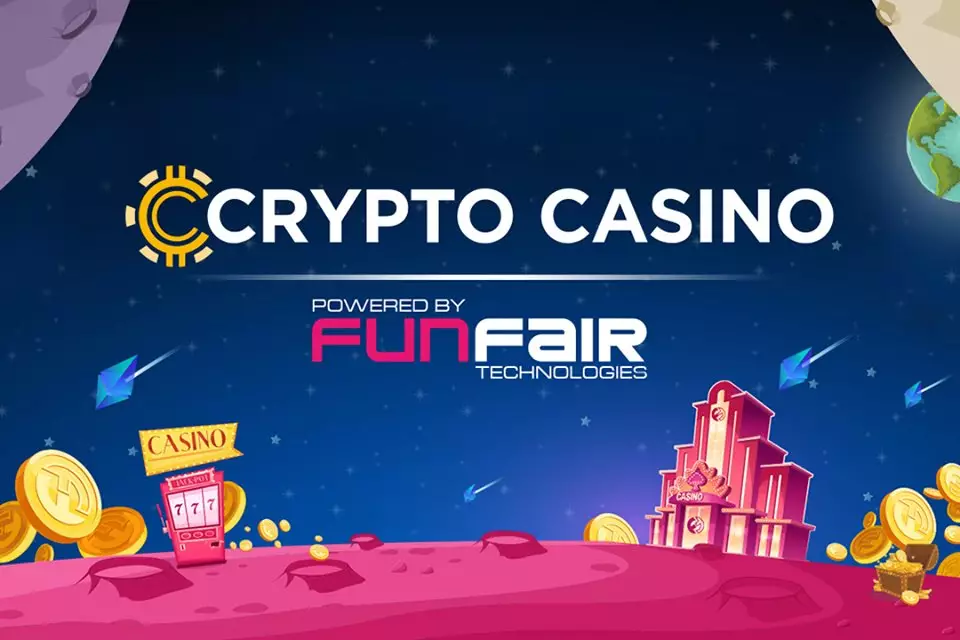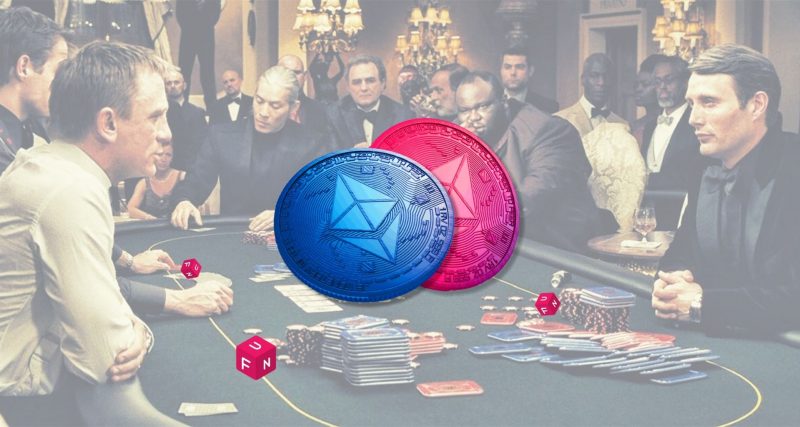The FunFair (FUN) Crypto token is an asset that is developed specifically for the online gaming and gambling industry. The FunFair (FUN) Crypto token also combines the Ethereum blockchain’s qualities and a cutting edge tech stack, making the FunFair Crypto token a powerful and valuable resource for different players, platforms as well as developers alike.
It also supports a new age of digital gaming due to the following features:
- FAST maximizes your playing time with in-game transactions and rapid wallet-to-wallet transactions.
- TRANSPARENT: Here, the transactions are publicly recorded, decentralized, and trackable.
- SEAMLESS: The FunFair Crypto token is an ERC20 token. Furthermore, the Ethereum blockchain makes the whole procedure more accessible and faster.
- OPEN: Everyone here, such as the casinos, players, and developers, can harness the power of the FunFair (FUN) Crypto token.
- SECURE: The ownership of the FunFair Crypto tokens is anonymous. The existing product development and the extension actively encourage different gaming operators to take advantage of the FunFair Crypto token ecosystem and the player base, increasing the usage of the token.
The current product developments also include a new casino and other gaming opportunities using the FunFair (FUN) Crypto token, which is designed to be easy and straightforward for the end-users.
ADVERTISEMENT

In the future of cryptocurrency, the FunFair Crypto token intends to launch a new ticket on a less expensive sidechain and more performant than Ethereum. This token will only be available via a 1:1 bridge mechanism with the FunFair (FUN) Crypto token. The users will have to escrow the token to acquire the new one, reducing the trading supply and ultimately increasing the demand. On-chain peer-to-peer gaming, including sports betting, poker, and casino on the new token, will enable frictionlessly and fast operation. Additionally, a strategic burn schedule for the FunFair Crypto token ensures that the Fun Token retains its value in the future.
What makes the Funfair (FUN) Crypto Token Unique?
The FunFair Crypto token seeks to revolutionize a whole of a booming industry. The online gaming sector is popular, but with the introduction of this blockchain technology to the fundamentals, more and more people are bound to enter it, as per the company. Additionally, building a gaming website like this on the blockchain will allow the introduction of various crypto assets to that platform, therefore, diversifying the funding options. The FunFair Crypto token can effortlessly invest in crypto assets in online casinos and gaming. The FunFair Crypto token is also Ethereum-based, which means the platform is scalable and can also incorporate decentralized applications. It is not possible with traditional gaming websites.
How is the Funfair Crypto Network Secured?
As an Ethereum-based ERC-20 token, the FunFair (FUN) Crypto token operates under the POS (Proof of Stake) consensus method. This POS method was created as an alternative to Bitcoin’s POW (Proof of Work) consensus. While the POW requires a particular amount of processing power for tokens to be mined, the POS distributes mining capabilities based on the already acquired tokens. Furthermore, many analysts point out that the Proof of stake is an easily scalable consensus method, allowing for greater flexibility in the used cases. As a result, this is becoming a much more popular consensus method in recent years.
ADVERTISEMENT
How many FUN tokens are there in the circulation?
The FunFair (FUN) Crypto tokens are pre-minted with no further issuances. A maximum supply of 17 billion FunFair (FUN) Crypto tokens was created on June 22, 2017, in an official FUN pre-sale. Moreover, more than 80% of the FunFair (FUN) Crypto tokens were distributed to industrial purchasers and investors during the pre-sale event. The 11.173B of this minted FunFair (FUN) Crypto tokens were reserved for a second pre-sale, later removed from the entire procedure. More than half of the reserved FunFair (FUN) Crypto tokens, around 55%, were burned as they were categorized as surplus. The remaining 4.7B tokens were transferred to a cold storage wallet and secured for future sale to the institutions or the large token buyers.
Reference Links
Procommun Suggestions
ADVERTISEMENT
procommun.com








